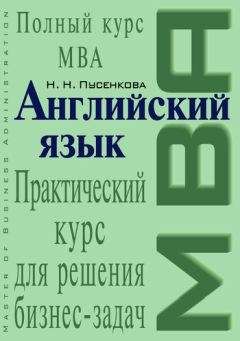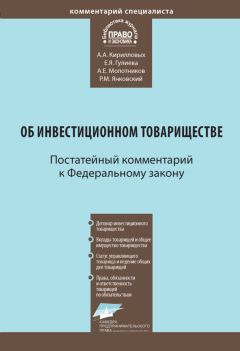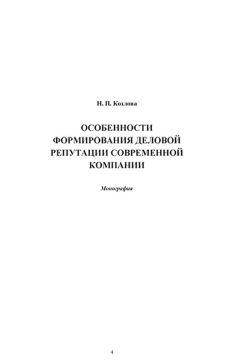Ознакомительная версия.
Exercise 5. Translate into English.
ОАО «НОВАТЭК»
Неослабевающий спрос на акции компании ОАО «НОВАТЕК» показал, что иностранные инвесторы не так сильно обеспокоены упущениями российского правительства в секторе природных ресурсов, как утверждали западные СМИ после «дела ЮКОСа».
Владельцы «НОВАТЭКа» продали 17,3% обыкновенных акций компании на Лондонской фондовой бирже по цене $ 16,75 за каждую GDR – максимальной цене в рамках ожидаемого диапазона. В первый день размещения на момент закрытия торгов акции «НОВАТЭКа» стоили $ 19, что на 13% выше цены предложения. Огромный спрос позволил UBS AG и Morgan Stanley, выступившим международными консультантами размещения, реализовать свой опцион на продажу дополнительного 1,7% акций, что в итоге увеличило объем привлеченных средств в рамках IPO до $ 966 млн, а количество размещенных акций – до 19%. Подписка более чем в 12 раз превысила первоначально запланированную сумму предложения, а стоимость компании в результате составила почти $ 5,5 млрд.
IPO ОАО «НОВАТЭК» является на данный момент вторым по величине IPO российской компании после IPO АФК «Система» в объеме $ 1,56 млрд, проведенного в феврале этого года. Несмотря на некоторые опасения инвесторов, вызванные отношением компании с ОАО «Газпром», IPO «НОВАТЭКа» прошло успешно. Это объясняется главным образом привлекательностью компании для широкого круга инвесторов, ищущих выход на самый крупный в мире рынок газа. Согласно проспекту IPO ОАО «НОВАТЭК», привлеченный капитал будет использоваться для погашения долга, возникшего в процессе консолидации компании в конце 2004 г.
Ключевые данные
Дата IPO – 21 июля 2005 г.
Фондовая биржа – LSE
Андеррайтеры
Лид-менеджеры – Morgan Stanley, UBS AG, CSFB
Соменеджеры – «Тройка Диалог», Alfa Capital Markets, Внешэкономбанк
Форма предложения акций – GDR (каждая представляет 0,01 акции)
Количество размещенных акций – 52,44 млн
Компанией – 0
Существующими акционерами – 52,44 млн
Количество акций, включенных в опцион на сверхраспределенную долю, – 5,25 млн
Доля размещенных акций в уставном капитале – 19%
Заявленный ценовой коридор – $ 14,75—16,75
Цена размещения – 16,75 долл. США
Суммарный привлеченный капитал – $ 966 млн
Цели привлечения средств – реструктуризация долга
«Спрос на эту сделку с точки зрения объема и качества был одним из лучших за последние два года», – cказал Хенрик Гобель, глава европейского фондового синдиката Morgan Stanley.
Bloomberg, 21 июля 2005 г.
Источник: Russia IPO’s Pioneers, www.pbnco.com
Lesson 32
Commodity Trading
Read and translate the text and learn terms from the Essential Vocabulary.
The 10 Commandments of Successful Commodity Trading
I’ve been trading for myself and for others going on 20 years. In all my years trading and watching others trade, studying the markets and listening to all the different «gurus of the moment», I have come to find a few simple truths. In no way am I suggesting that these are all the truths or that there is any monopoly on truth, especially in trading. Nevertheless, if one is in this game long enough one starts to notice things. One of those things is that a lot of systems and approaches to commodity trading work a lot of the time, and another is, from time to time, some work exceedingly well.
So why do so many people lose money trading in the markets while others consistently make hundreds of thousands – even millions of dollars each year? It is my contention that for most of us it boils down to a few simple sins. Sins that a lot of people trading in the commodity market tend to repeat over and over again. Like the old man in Las Vegas still hitting on seventeen at the blackjack table, some people never learn. It can be a basic flaw in the system or trading approach or no approach at all. But most of the time, in my view, it is in the trader himself – the one pulling the trigger.
Here, accordingly, is my take on the ten deadliest sins:
I.Thou shalt not risk more money than thou can afford to lose. Also known as «if you can’t afford to lose, you can’t afford to win.»
Let’s face it – this ain’t bean ball. You can lose money! Stop right here, throw away this handbook, forget about trading futures, do something else with the rest of your life if losing whatever money you might trade with would take food off your table, keep your kids from going to college or change your lifestyle. Repeat, there is no system or approach available that doesn’t sustain losses sometimes. The trick is containing those losses.
II.Thou shalt not trade futures without the placing of stops.
Also known as «you’ve got to know when to hold up, know when to fold up.» Show me a futures trader who doesn’t use stop loss orders and I’ll show you someone who loses a lot of money. Before initiating any trade if you haven’t already figured out at what point you would be wrong and would want to cut your losses or, at the very least, reevaluate your position from the sidelines, then you shouldn’t be putting on the trade.[3] You should also have a profit or price objective that is at least twice the proposed risk, and you should never take a profit just for the sake of taking a profit.
Options, of course, are different because of the inherent liquidity problems in some markets and because frequently the reason an option is purchased in the first place is to «ride the wave», or position trade, using the fixed risk of the option premium itself.
III.Thou shalt not let large profits turn into losses. Also known as «stupid».
The most common scenario is: You’ve had a favorable move in the market, maybe you are up a few thousand dollars per contract. Hopefully, you followed the second commandment and placed an open stop loss order when you initiated the trade. But now you are afraid to raise your stop and lock in at least some profit because you don’t want to get «whipsawed» and stopped out. Then the market reverses. So you let the market take back some of your profits, hoping it will turn around again, until all of a sudden your once profitable trade is now under water and in real danger of being stopped out at a loss! What went wrong? The answer is: You didn’t raise your stop. Most pros use a trailing stop system, (a pattern of raising their stop to lock-in profits) based on either chart points or a pure money management approach. You should too.[4]
IV.Thou shalt not let thy emotions rule. Also known as «a fool and his money are soon parted».
This is probably the hardest commandment to keep. Yet, I have never seen a successful trader over the long haul who didn’t follow it. Most people want to be winners. Most people want to make the big score and have the accompanying bragging rights. We all tend to get greedy, speculators usually more so. But trading is a business. You must be cool, calm, and always ready for the next opportunity. You can’t have high highs or low lows because you’ll make too many mistakes, and mistakes mean losses. If you start winning and get «too high», the tendency is to over-trade. By that, I mean starting to make marginal trades just for the sake of making trades, instead of waiting patiently for the right opportunity. If you get too low (this is usually after some losses), you are liable to skip the trades you should be making, or you might try to «cherry-pick» a system or an advisor’s recommendations for fear of more losses, inevitably making the wrong choices. To win this game you must remain clear-headed.
V. Thou shalt not place all thy eggs in one basket. Also known as «live to trade again.»
Ask any pro trader how much of their total account they risk on any one trade and the answer undoubtedly that will come back will be not more than ten percent. Why? Because the successful trader knows that losses are part of the game, and that frequently a few big profitable trades during the year more than make up for all the little losses, and they want to be around when the next opportunity arises.
VI. Thou shalt not buy deep out-of-the-money options. Also known as «you get nothing for nothing».
This is also known as the broker’s best friend.
Now brokerages are in business to make money, ours as well as everyone else’s. Everyone accepts that. And commissions are the energy source that makes it all possible. Most brokers do get some percentage of the commissions as their pay. Since most options are traded on a round-turn basis, it stands to reason that the more options the customer buys, the more money the broker makes. Therefore, the cheaper the option premium the more options the customer can buy. But not all options are created equal. For instance, let’s say gold is trading at $400 an ounce and you think gold will rally. There are usually 100 oz. «call» options offered in strike prices of $400, $410, $420, $430 and so on for a specific amount of time (there are also lower strike prices offered). Keep in mind that at expiration gold must be above your strike price to have any value. It follows then, that at expiration if gold is trading at $420 the $400 «call» option is worth $2,000 (100 ozs. X $20); but the $430 «call» is worth zero. That is why the further away from the market the strike price, the cheaper it costs to purchase. The unscrupulous option brokers will sometimes convince their clients to buy «deep out-of-the-money» options – options that are five, ten, sometimes fifteen strikes away from the underlying market. They are usually very cheap and the broker can buy a lot of them for a small amount of money and therefore rack up a large commission for him or herself. The problem is they have almost no chance of making any money for the client because the market will have to make a huge move in a relatively short period of time to pay off. And although that does happen in commodities, the odds are against it.
It is my experience that options have the greatest appreciation from roughly two to three strikes out-of-the-money to two to three strikes «in-the-money». At our firm, we discourage brokers from recommending buying options much further out than that except in special situations.
VII. Thou shalt not fight the tape. Also known as «the trend is your friend».
The mistake speculators sometimes make is trying to buy or be long while markets are still in a basic downtrend, or selling short when they are in an up trend. Most professional traders try to identify the major trend and construct their trades in that direction. They know that when you trade «with the trend» usually your chances of winning improve. Many times the trend will bail you out of an initially less than great entry point. There are many ways to analyze trends, but most involve some kind of price action like moving averages using daily or weekly charts, or somewhat more sophisticated technical indicators like stochastics or the ADX line.
VIII. Thou shalt not stay in losing trades too long. Also known as «the best trades are usually right, right away».
Let’s face it – you can’t turn a sow’s ear into a silk purse. The best trades are usually right immediately. I know a lot of commodity traders who say, stop or not, if the trade is not profitable within two or three days they’re out, cutting their losses even shorter. They don’t need to hang around just waiting to get stopped out. Experience tells them they will get stopped out. Remember, people have been trading commodities for a hundred and fifty years, the smart traders know there’s always going to be another trade. Cut your losses short.
IX. Thou shalt not follow crowds.
If you are around long enough in this business you come to have a healthy appreciation for the theory of contrary opinion. Simply stated when everyone’s bullish, sell. When everyone’s bearish, buy. That’s because historically, the public is usually wrong. But of course, it’s not quite that easy. It is extreme bullishness or bearishness that you look for. It is not enough to see a lot of bulls around. It has to be everyone and their mother is bullish, they’ve put every available dime in the market, and they think «this time it’s different» and the market will never turn bearish again, or at least not for a long time and all corrections are nothing more than buying opportunities. That’s what you look for – then you go the other way. Conversely, when the market has been flat or falling for it seems like forever and everyone’s given up, thrown in the towel, packed it in and sold out all their remaining losing positions saying «I hate this market and I’ll never trade it again.» That’s when you buy with both hands.
X. Thou shalt not step over dollars to save pennies. Also known as «get a broker.»
This may be the most important commandment of all. Although the «highs» you can achieve when you are successfully trading commodities can be spectacular, you must always keep in mind that this is a serious business. And like many things in life, if you haven’t done it before you need someone to help show you the way. You need a guide. If you don’t understand how to read a chart or the proper terminology to use when placing trades, or what supply and demand factors may affect the currency or commodity being considered, then you should open an account with an experienced commodity broker. Although it will cost more, in the long run I believe you will save money. That’s because it takes time to learn how to trade. Most professional traders spend a fair amount of time in the school of hard knocks before succeeding. They need to live through both bull and bear markets to gain the proper perspective. Don’t kid yourself – experience counts. A good broker can help you greatly in your pursuit of profits. And if you get the right one, you can even «earn while you learn.»
Ознакомительная версия.





